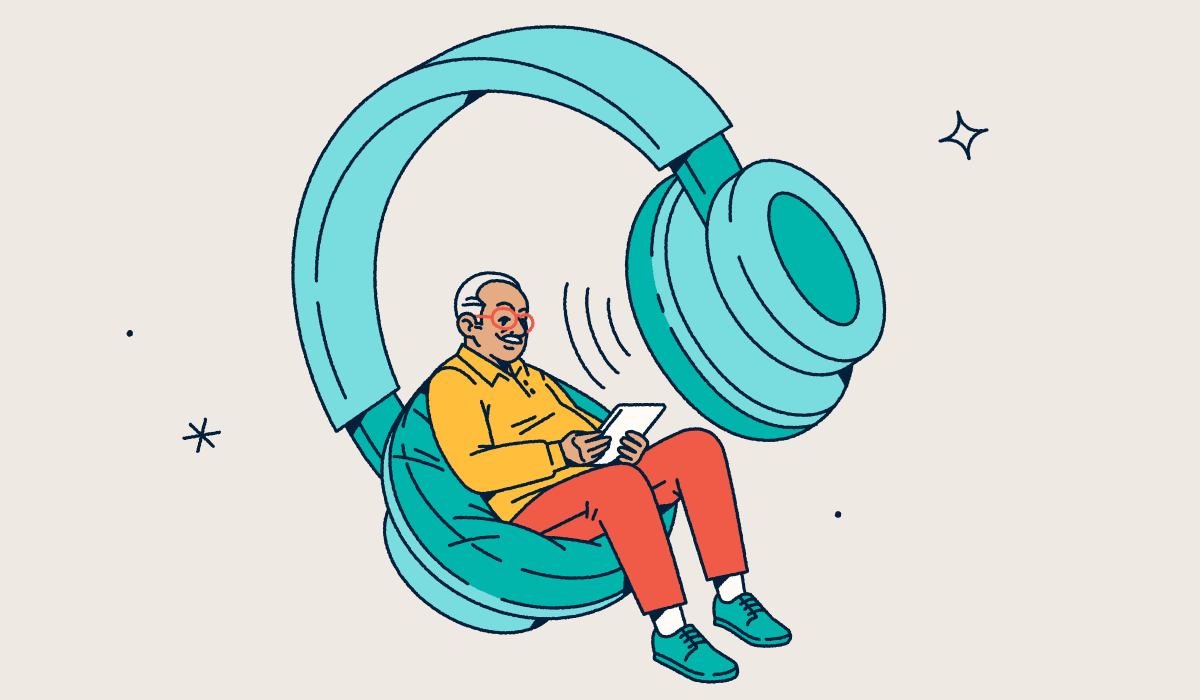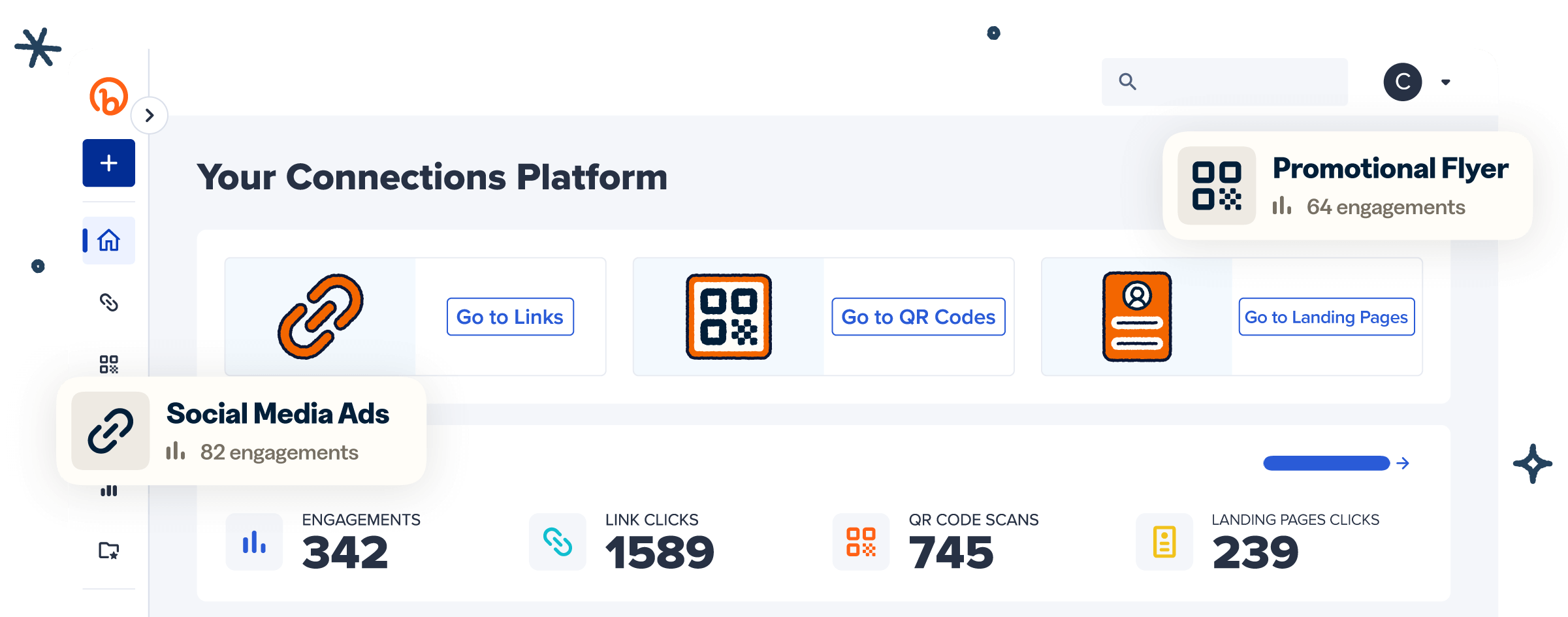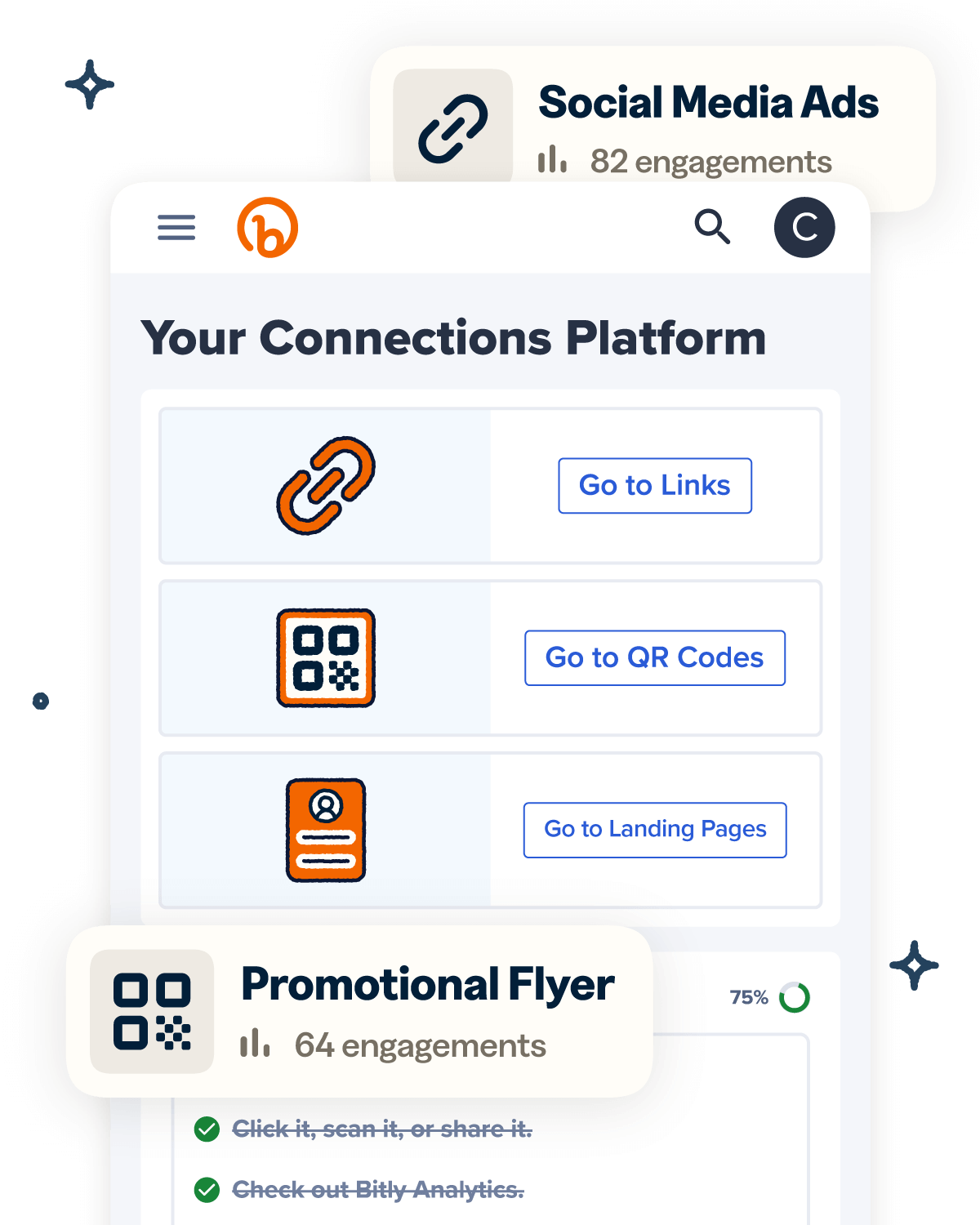Want to share a playlist, stream a podcast, or sign into your favorite music app—just by scanning a code? QR Codes are making that—and more—possible. These scannable shortcuts are transforming how we discover, share, and engage with music, whether you’re a listener, an artist, a record label, or part of a streaming platform’s marketing team.
For media brands and record labels, QR Codes offer more than just convenience—they’re a smart, scalable way to connect fans with content, boost plays, and drive deeper interaction across digital and physical touchpoints.
Here, we’ll explore how media brands use QR Codes to power smarter promotions, improve fan engagement, and create more connected music experiences.
Note: The brands and examples discussed below were found during our online research for this article.
Why music streaming platforms use QR Codes
QR Codes are quickly becoming a go-to engagement tool for music streaming platforms, who are using them to:
Make music more discoverable
With 202 million tracks across streaming services like Spotify and Apple Music, it’s easy for listeners to feel overwhelmed—especially when they’re eager to discover new artists but don’t know what or who to search for.
Adding QR Codes to marketing materials removes that friction. One scan can open a landing page featuring a playlist, album, or artist profile—no typing required. It’s a win for listeners, who get instant access to new music, and for platforms, which benefit from better user experiences and more streams.
Example: A streaming platform’s marketing poster features a QR Code that links directly to a URL with a curated playlist, making it easy for listeners to discover new music.
Connect online and offline music experiences
Music discovery doesn’t just happen online. Fans often encounter new artists through posters, billboards, merch, print ads, and event flyers. But making the jump from physical promotional materials to streaming platforms usually means logging in and manually searching for a track—which is cumbersome.
QR Codes create a seamless connection between physical promotions and digital listening experiences, making it easy for fans to go from “What’s this?” to “Now playing” in seconds. For streaming platforms, it’s a direct way to drive traffic and deepen engagement.
Example: A vinyl record includes a QR Code that directs music lovers to a digital streaming page with a single scan.
Encourage user interaction and playlist sharing
Music is social at its core—fans love sharing their favorite tracks, albums, and playlists. Streaming platforms know this and are using QR Codes to make sharing even simpler.
Take Spotify QR Codes, for example. Instead of copying and pasting long URLs, users can create scannable codes linked to their favorite songs or playlists. Friends just scan and start listening—no manual search needed.
By removing extra steps, QR Codes create a smoother sharing experience that encourages more interaction and helps platforms grow their communities.
Example: A Spotify listener creates a QR Code linked to a landing page with their favorite playlist, making it easy for friends to discover and save new tracks on the platform.
How music platforms integrate QR Codes into their apps
Major streaming services like Spotify, Apple Music, and YouTube Music use QR Codes in their apps to simplify sharing, streamline access, and enhance the user experience.
Playlist and song sharing through QR Codes
Platforms like Spotify and Apple Music let users share playlists and songs with a quick scan. On Spotify, listeners and artists can use Spotify Codes—built-in codes unique to the platform—or generate their own using a track’s URL and a third-party tool.
While Apple Music doesn’t offer native QR Code functionality, users can still create scannable codes by linking to songs or playlists through a QR Code generator. Either way, these codes remove the need for manual searching and make sharing music faster and more convenient.
Account sign-in and profile linking
Some music platforms use QR Codes to simplify logins and make account access more convenient. For instance, YouTube Music lets users sign into their account instantly from a Tesla screen by scanning a designated QR Code instead of typing in a password. It’s quick, secure, and ideal for on-the-go access.
Promoting exclusive content and live sessions
Streaming platforms allow artists to use QR Codes to direct fans to exclusive content, livestreams, or behind-the-scenes footage. It’s a simple way to boost fan engagement and deepen artist-audience connections.
For instance, Amazon Music users can seamlessly share livestreams with their audiences by:
- Going to the Amazon Music Live page
- Copying the link to the specific live session they want to share
- Using the URL to generate a QR Code
When someone scans the code, it instantly directs them to the chosen Amazon Music Live event—no searching required.
How artists and labels use QR Codes on streaming platforms
Artists and music labels are using QR Codes to enhance fan experiences, get more listeners, and simplify music promotion. From album launches to merch drops, QR Codes for media and entertainment are helping bridge the gap between fans and the music they love.
Driving traffic to new releases
QR Codes provide quick, direct access to streaming platforms, making them ideal for promoting new albums, singles, or collaborations. Artists can simply embed track or album URLs into QR Codes and share them across social media campaigns, merch, or posters.
Example: A popular country music artist links a QR Code to a landing page that plays their new release and prints the code on merch to draw attention to the track.
Promoting concert tickets and event registrations
QR Codes are also an excellent way to streamline ticket sales. By linking directly to ticket purchase or registration pages, they eliminate the need for manual searching—so fans can act fast.
Example: A musician prints a QR Code on their album covers that links to a ticketing page via URL, making it easy for fans to buy concert passes with a quick scan.
Enhancing fan engagement through merch and digital rewards
Artists can use QR Codes on merchandise to deepen fan engagement by offering exclusive content or perks—like behind-the-scenes footage or discounts on next album purchases. These extras turn standard merch into interactive experiences that strengthen fan loyalty.
Dynamic QR Codes work especially well here because artists can update the linked URL at any time without needing to reprint codes. For example, an artist promoting a new album might first link the code to a landing page with a discount, then later redirect it to a bonus track or exclusive video.
Example: An artist adds a QR Code to a limited-edition hoodie that links to a personalized thank-you message on their Spotify Merch page—creating a memorable fan moment with extra value.
How QR Codes help with music marketing and analytics
Beyond simplifying access to music, QR Codes also offer valuable insights into listener behavior and promotional effectiveness. Here’s how:
Tracking engagement and listener data
QR Codes remove the guesswork from campaign performance by giving streaming platforms and artists real-time data on listener interest. With Bitly Codes, for example, you can track total scans over time to gauge campaign traction.
Additional metrics—like scans by location (city and country level), referrer, and device type—offer deeper insight into your audience. This data can inform where to host your next event or how to tailor audio content and videos for your top-performing regions and devices.
Example: A label monitors QR Code scans to see where a song is trending and uses that insight to plan tour stops.
Enhancing digital advertising campaigns
QR Codes strengthen marketing campaigns across social media, YouTube, and influencer content by giving users a direct path to music streaming platforms. This reduces friction in discovery and helps drive traffic to featured tracks, albums, setlists, or playlists.
Example: An up-and-coming artist includes a QR Code in their YouTube ad that instantly transports viewers to a streaming platform landing page promoting their new music.
Optimizing marketing with Bitly’s QR Code analytics
Bitly Analytics provides powerful engagement insights, showing when, where, and how QR Codes are being scanned. This data helps streaming platforms, artists, and labels refine their marketing strategies with precision.
For example, you can A/B test different offers, promotional channels, or message types and compare scan data to see what resonates most with your audience. These insights support ongoing marketing strategy optimization and better campaign performance.
You’ll also see where your fanbase is engaging with your QR Codes (city/country), making it easier to launch targeted campaigns. If scans spike in a specific city, you can increase promotions or plan events there—turning listener data into more interactive experiences for your audience.
Use Bitly Codes to level up your platform’s engagement
QR Codes simplify how fans access content and how platforms share it—turning physical touchpoints and digital campaigns into real-time engagement opportunities. Whether it’s sharing a playlist, promoting a concert, or launching a new album, QR Codes give artists, labels, and platforms a fast, flexible way to reach listeners.
With Bitly, you can create branded Dynamic QR Codes that link to any URL, making it simple to share new releases, merch drops, live sessions, ticket sales, and more.
Plus, you can update the destination URL without reprinting materials and track scan performance in real time to see which campaigns drive the most engagement—all from one dashboard. It’s a smarter, more efficient way to connect with your fanbase and fine-tune your music marketing strategy with every scan.
Sign up for Bitly to create QR Codes that move the needle—on plays, shares, and fan engagement.




